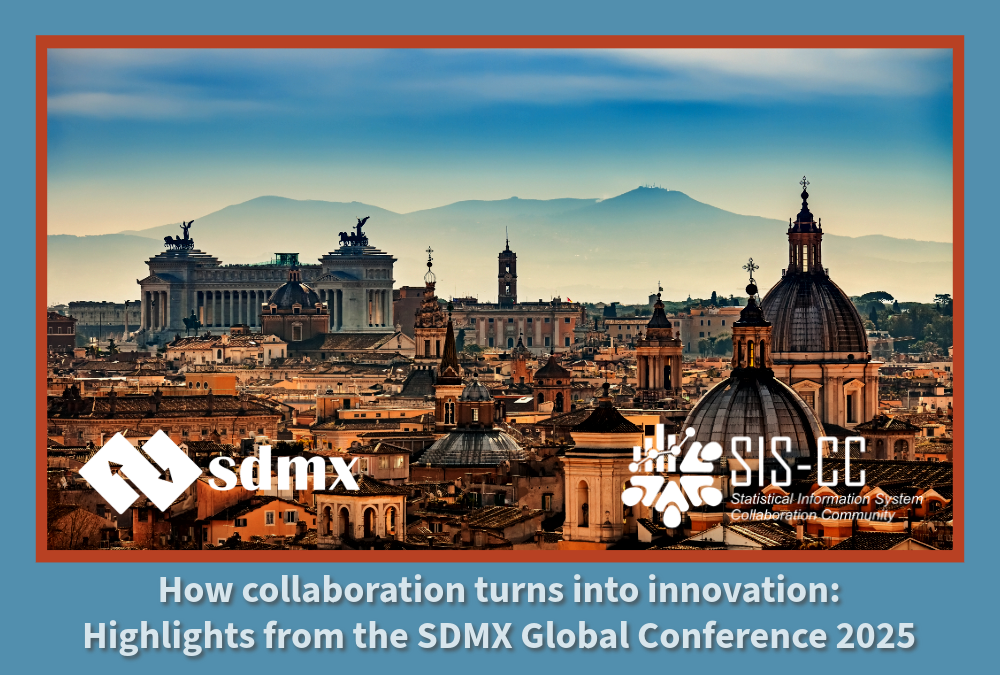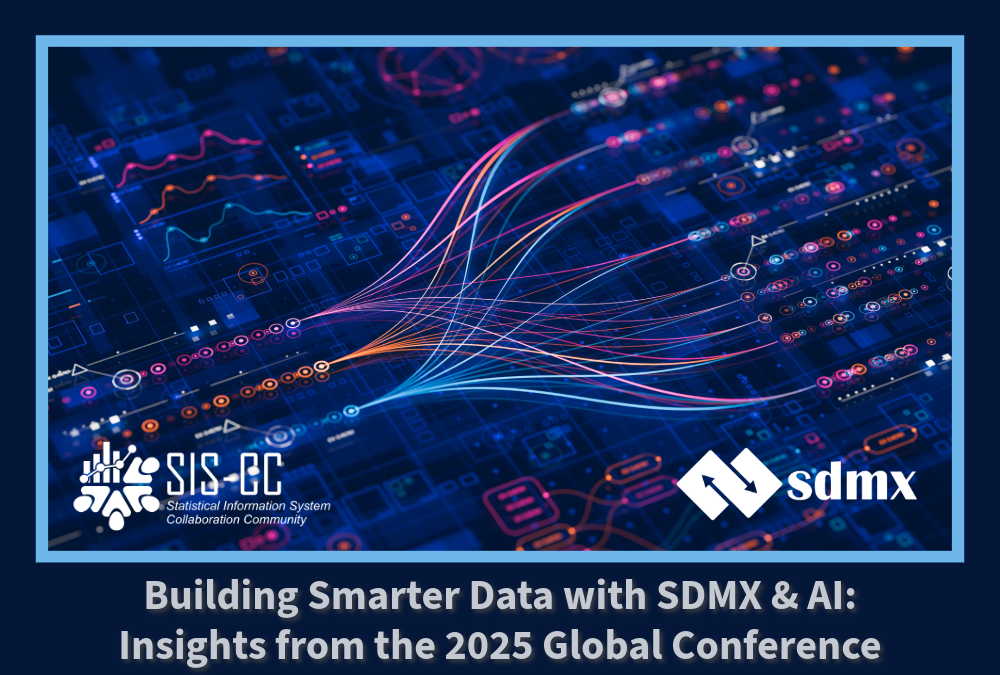
At the SDMX Global Conference 2025 in Rome, one message resonated across plenaries and hallway chats alike: communities are where innovation happens. Nowhere was that clearer than during the SDMX Communities panel, where partners showcased how shared roadmaps, co-investment, and open standards are speeding up real progress, particularly around AI.
Communities in action: highlights from the panel
In the SDMX Communities panel, OECD Head of Smart Data Eric Anvar highlighted SIS-CC‘s multi-tier and open source model, its expansive network of global partnerships and its focus on capacity building as key elements in building a inclusive ecosystem that caters to a growing community.
BIS’s sdmx.io demonstrated how an open, shared toolset can lower entry barriers and cut duplication by giving practitioners a common space to contribute patterns, libraries, and deployment assets.
The African Development Bank’s Africa Information Highway (ODP 2.0) showed a community-driven, modular, open-source platform that unifies data and metadata management and anchors a Pan-African data-sharing community built for AI-readiness.
Eurostat and the European Statistical System (ESS) underscored the value of a coordinated framework, combining tools, training, and implementation support, to sustain broad SDMX adoption across regulated domains. Taken together, these examples show how shared infrastructure and open collaboration shorten the path from idea to production.
AI is here – and communities are the multiplier
Across the conference, sessions and discussions explored lightweight, on-prem integrations, agent-based approaches, and retrieval patterns (including graph-augmented retrieval) tailored to statistical data. A key theme: SDMX’s structure is an asset for AI-readiness, helping reduce friction for trustworthy, machine-to-machine use – precisely where demand is growing fastest.
At the same time, several interventions from across the SDMX community underscored a complementary priority: to know your users, both human and machine. As conversational interfaces become a major gateway to statistics, the community’s next wave of innovation must include systematic user research to guide where and how we invest. That focus is embedded in the evolving SIS-CC strategy and the mandate of the Community User Research Task Force (UTF).
Collaboration by design, not by chance
SIS-CC’s model is built for collaborative innovation: an open community focused on co-investment and co-innovation, supported by a multi-tier participation model, global partnerships, capacity building, and a community-driven funding framework. These aren’t slogans – they’re operating principles that let organisations pool resources, ship production-grade tools, and iterate faster together.
Beyond the main sessions, SIS-CC’s presence focused on practical enablement: a well-attended Community side event, co-hosted by the OECD, BIS and ILO on Next-Generation SDMX Data Modelling spotlighted user pain points and the SDMX+AI frontier – from auto-generating models to pragmatic QA workflows – ending with concrete asks for the roadmap ahead.
A standing invitation
Building on Rome, SIS-CC will keep turning collaboration into tangible innovation. In the months ahead we will:
- Deepen SDMX+AI collaboration, convening community show-and-tell sessions to compare implementations, share patterns, and converge on good practices.
- Advance the .Stat Suite as the community’s open platform—expanding SDMX 3.x capabilities and delivering utilities that make pipelines easier to build, test, and operate.
- Strengthen user-research loops, so product decisions across .Stat Suite and the wider ecosystem target real-world needs – human and machine.
- Scale capacity building, evolving curricula and lab environments to help organisations adopt SDMX 3.x features and AI-ready workflows with confidence.
SIS-CC exists so that no one has to innovate alone. If your organisation is exploring SDMX migration, AI-ready dissemination, or modern data-modelling practices, check out the full presentations and join the conversation – contribute, co-invest, and build with us. The momentum from the SDMX Global Conference 2025 shows what’s possible when communities set the pace together.

